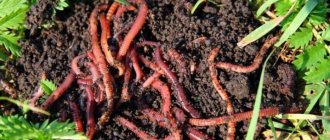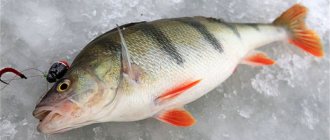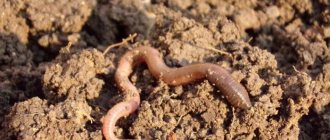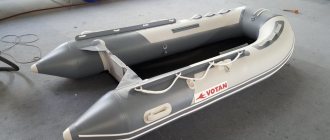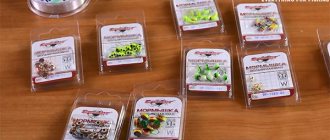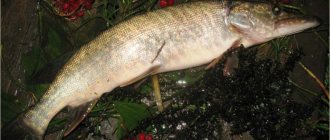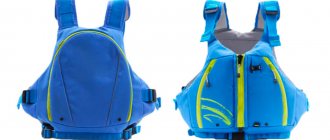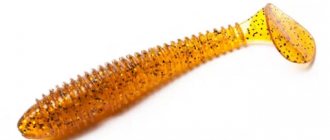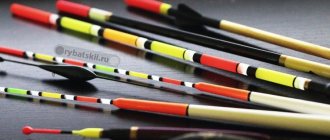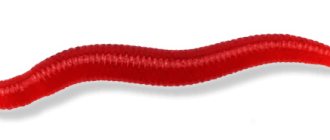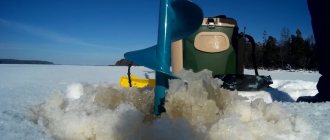- Bait
- Live
4499
Every fisherman understands that the effectiveness of catching a particular fish largely depends on the correct choice of bait. For example, it is better to catch a roach or bream using maggots, already quite active May crucian carp - using mastyrka or semolina, and for large carp, serve a boilie or a piece of sunflower cake. But there are also universal baits that have proven themselves in catching different species. These include worms for fishing. It is with them that beginners most often try to catch their first crucian carp, and seasoned fishermen often go for serious trophy fishing with such bait.
Where to collect and how to properly store worms?
Worms have received their widespread use partly because they are quite easy to find, they are simply excellent at setting and staying on a hook, and can be transported over long distances without much hassle.
Some worms are even stored for future use and stored under certain conditions in proper form for a long time. Let's stop here and take a closer look at how and where novice fishermen collect worms and store them correctly.
On a hot summer day, especially before it rains, you can often see worms sticking part of their body out of the hole. You can grab the worm and try to pull it out of the burrow.
But in order not to break it off, you need to wait for some time, without pulling it out, until the worm weakens and stops resisting. After this, you can carefully pull it out.
If you were unable to pull a whole worm out of the hole and it broke off, then it is advisable to use part of the worm for fishing on the same day. If this is not possible, then in any case do not mix them with whole worms; it is better to collect them separately.
Even if you dig worms out of the ground with a shovel, you should not use it with a bayonet, so as not to cut the worms, but it is better to dig out a large lump of earth and disassemble it with your hands, helping yourself with a stick.
How to raise mealyworms for fishing
Mealyworms are another type of bait that is used in fishing. They appear as beetle larvae. It is not always possible to buy bait in the store, so it is easier to have a nursery with worms at home. A small plastic box is suitable for growing them. Small crackers, bran, earth, bread crumbs, and sawdust are poured inside it.
We invite you to familiarize yourself with Strawberry “Vima Tarda”: description of the variety, photos and reviews
The layer of feed should be about 10 centimeters. You buy beetles, the more, the better. They lay eggs and within 2 months you get worms. The offspring are fed rarely, once every 2 days. Make sure that the mixture in the box has a humidity of at least 50%. The temperature for keeping mealyworms should be about 28 degrees Celsius. At low temperatures they develop poorly and grow slowly.
Growing worms for fishing at home is quite simple. They do not require serious care or maintenance costs. They feed on waste, which can be compared to garbage disposal. By growing worms for fishing at home, you will not need to look for bait in stores; you will know that it is always at hand and always of decent quality.
Where in the city can you find worms?
Where can you find worms in urban areas? There are a lot of worms where two curb stones meet, where asphalt paths are rarely cleaned, and in places where debris accumulates.
Worms crawl there from under the asphalt in the spring, when the snow melts, since these places are warmed up by the spring sun earlier than others. And after the rains, the worms leave their shelters and crawl out onto the asphalt.
This is where fishermen often collect them, placing them in boxes (boxes) with soil, which are kept in the shade and in a cool place. True, worms collected on asphalt after rain are quite weakened.
A few days before fishing, these worms should be sorted several times, removing the dead ones, but the remaining worms will be more durable during storage.
How to breed worms in an apartment
Breeding worms at home for fishing is also possible in a city apartment. At first glance, this seems absurd and unsanitary, but there is an option to do this without harming living conditions. To raise creatures, enamel dishes are chosen, it can be a basin or a bucket. Worms also live well in an aquarium.
If we talk about a plastic or wooden container, then the worms will not live in it all winter. But, if we consider growing worms as a short-term measure, such a box can be taken. Now we need to start selecting land. Please note that the soil should not contain a lot of humus.
It is advisable that it not be there at all. Fallen leaves and tree roots rot under the influence of high temperatures. Humus, in turn, absorbs oxygen from the soil. If there is little oxygen, the worms will not be able to survive in such conditions. Carefully monitor the quality of the soil and choose the right food.
How to properly store worms?
It is advisable to store collected worms in the ground. There are many substrates for aging worms: sleeping tea, fine white quartz sand. You can add garlic juice and sunflower oil to the substrate.
It is good to store worms in finely chopped grass, and the grass should be tightly compressed and the packing density should be similar to the ground. With this method, the worms are not only well preserved for several days, but also become elastic.
Metal cans, and even plastic boxes even with holes, are of little use for storing worms; it is better to use a glass jar for this purpose (you just need to handle it carefully so as not to break it), tying a layer of gauze on top.
It’s even better to use a wooden box with an opening hinged lid to store worms: when storing, the lid closes tightly, and when fishing, it should open easily if necessary. It is desirable that there are small holes in the lid of the box.
The best material for such boxes is hardwood. Of course, you can store worms in canvas bags, but the soil dries out quickly during such storage.
What conditions do red worms live in?
Breeding worms at home for fishing is possible in the garden or on a specially designated piece of land. An important condition for the development of creatures is high soil humidity. Ideally, it will not fall below 70%. When the moisture in the soil is 22% and this continues for 7 days, all the worms will die.
A soil moisture level of 35% will slow their growth and you will end up with less mass than you would if you kept the soil moist. The second condition is an abundance of organic waste with a high nitrogen content. It is recommended to monitor the acidity of the soil; if it is higher than pH9, worms will not live in such conditions.
It's bad and when the acidity drops below pH5, the creatures will stop reproducing and die. The optimal acidity level is pH7. The worms should be kept at a temperature of at least 18 degrees Celsius, preferably a temperature of 24 degrees.
The fact is that when it is cold the worms stop eating and growing. They begin to burrow deep into the ground, where it is much warmer and fall asleep. They wake up two weeks before the start of spring. Their biological clock works perfectly, so they subtly recognize the seasons. Growing worms at home will be easy if you follow the care technology.
Which worms are best for fishing?
The most popular among fishermen are dung worms; their color is quite bright: reddish-violet or brownish-red in the form of transverse stripes.
But not only with its bright color does such a worm attract fish; when irritated, a bright yellow liquid is released from its dorsal pores, which has a sharp, peculiar odor.
Fish are much more willing to take on a worm that has already cleared itself of its eruptions. To do this, freshly dug worms should be allowed to rest for one or two days.
The cleaned worm becomes less tender and more beautiful, therefore it holds perfectly on the hook and does not stain your hands at all. One of the best and fastest ways to cleanse worms is to put them in hemp oil in the evening, and in the morning they will be ready.
If you are catching small fish, then you can put a whole worm or even a half on the hook. And if you catch a large fish, then it is worth attaching several small worms, but when crawling, they usually attach one.
At the same time, one should remember the remark of L.P. Sabaneev, that a “worm” planted from the head remains unkilled for a long time, its unpierced tail plays merrily and thereby attracts fish....” Let's look at several types of worms that can be stored for a long time and even for the winter.
How to properly prepare worms before fishing? (Video)
How to breed worms for sale
Breeding pets is a promising and inexpensive type of business activity. Investments are minimal, profitability is high. Individuals are in demand among fishing enthusiasts, summer residents, and farmers who specialize in preparing compost.
The optimal place to keep bait is cellars, sheds, garages. The technology and method of growing worms at home is simple, even a beginner can handle it.
Breeding worms at home can turn into a good business. The main distinguishing quality of such a business is a high level of profitability when compared with minimal investment of money.
Breeding worms for fishing in the countryside has many positive aspects:
- simple content technology;
- accessible equipment, the mastery of which does not imply the possession of special skills;
- increased demand for worms - the business will be in demand;
- You can sell not only animals, but also fertilizers - vermicompost and worm tea, which are unique compositions that effectively increase the yield of fruit crops, vegetables, and fruits.
The owner must create the most comfortable conditions conducive to the reproduction of the inhabitants. It is not necessary to be a professional in this field and know how to breed earthworms at home for fishing, but you should familiarize yourself with tips on caring for residents, replanting them, and feeding them.
To successfully raise worms, a fisherman must prepare a special box, soil, planting material, and substrate in which the animals will reproduce and feed.
For housing, wooden or plastic boxes with a height of no more than 40 cm should be arranged. Drainage holes should be made in their bottom in advance. Depending on the species of animals, the soil is soil from molehills or garden soil.
Important! When placing soil in a container, you need to make sure that there is no ash in the composition. It makes the substrate acidic, which adversely affects the functioning of the body.
Royal larvae are purchased in special nurseries or obtained naturally. Dig out the required volume of soil and remove the worms.
Crawling out
A crawler is a large worm that lives in the ground, no more than 30 cm long and no more than 10 mm thick.
Such a worm is also a delicacy for Pike, Catfish, and Perch. The front part of the worm is thicker than the tail, pointed and has a dark color, while the tail part is lighter and has a flat shape. The segmented body is covered with sticky mucus, which helps the worm glide and protects it from drying out.
To get a crawler with a shovel, you will need to spend a lot of effort, since the passages of this worm are deep. And in the fall it goes deeper and goes into hibernation. But there are several other ways to make this task easier.
The crawl can be collected at night in the garden or in the park near the house, and most often on the paths, using a flashlight. When hunting for a crawler, you should not make too much noise, since at the slightest danger the worm will instantly disappear into the hole.
You need to catch the worm at the very base of the hole. Just don't pull it, otherwise it will break. Wait a little, and after he becomes weak, pull him out.
Often, short, thick and clumsy crawlers are found in garden beds. They can be mined using a shovel. The crawler hook should be placed slightly below the head. And the body, partially shifting onto the leash, is pierced in the middle, then wrapped around the shank of the hook, and again pierced in the area of the tail, but not all the way through. Thus, the sting is camouflaged inside the worm's body.
Fishing with worms
One of the most famous baits used by fishermen all over the world are worms. Indeed, even those who are not interested in fishing at all know very well that fish are caught with a worm. It is with the worm that most novice anglers begin to fish, gradually mastering and learning about new attachments and baits.
Baiting a worm on a hook
Baiting a worm on a hook is simple at first glance. There are methods here.
The most popular method is to pierce the worm from the head and pull it with a stocking onto the shank of the hook. You can pierce through the middle, leaving the two ends to wriggle. And sometimes a fish, especially a small one, is more willing to bite only on a piece of a worm that covers only the sting of the hook. A good option is with two worms, when one is pierced across the body, and the second along, covering the hook. Considering that my main focus in fishing is on large fish, I practice another option. I pierce a couple of worms in the head area, another couple in the middle and the same number in the tail area. As a result, they form a moving lump that attracts the attention of large crucian carp, bream, etc. This option is good when small-sized worms are used, for example, subfoliates. I serve the crawler to the fish on a hook, piercing it with an accordion.
Fishing hooks
There are different hooks for fishing with worms. The main thing is that the height of the forend is sufficient to fit the required number of worms. It is better to match the color to the color of the worms, but I have repeatedly been convinced that contrasting hooks do not spoil the weather. It is debatable whether, when using worms, the hook tip should be brought out or not. Personally, when fishing on rivers, it is mandatory to leave the tip open; when fishing in standing waters, it is closed.
Worms in bait
Worms are not only an excellent bait, but also an excellent additional component of groundbait. Especially if you have to feed and catch them specifically. Worms have impeccable compatibility with any nutritional mixtures, so it is impossible to spoil complementary foods with them. Quite the contrary, because cut worms complement complementary foods with their contents. Moreover, not only “peaceful” fish, but also predatory ones, will more often approach such complementary feeding. First of all - perch. Preparing worms for bait is simple. Using special scissors with several cutting blades, they should be chopped into pieces, which are then added to the classically mixed nutritional substance. If you want to add a minimum amount of worms (for example, as an experiment when the bite is bad), you should not mix them with the total mass. When fishing with a feeder, just add a few pieces to a full feeder and see how the fish react to this option. If positive, you can continue feeding according to the same scheme or mix the trimmings with a larger volume of complementary food to speed up the fishing process. When fishing with a float rig, I do the same, rolling a small amount of cuttings into a ball.
Muckworm
Dung worm - lives in heaps of rotted manure and has a reddish-dirty color; such a worm is found near livestock farms, near garbage pits, garbage dumps, etc., but it does not exist in dry or damp manure.
Dung worm is a favorite delicacy for a wide variety of fish. But as soon as you put it on the hook, it immediately freezes.
To prevent this from happening and to keep the worms mobile, you should place them in some kind of jar and cover them with damp, rotted manure or simple cultivated soil.
After this, you should add a little drunk tea and carefully mix all the contents along with the worms. After a maximum of 5 hours the bait is ready for use. Using this method, the mobility of dung worms will be maintained for a day, or even longer.
The dung worm should be placed on the hook below the head, threading the hook through the middle of the body, thus hiding the sting of the hook inside. If you are going to catch large fish, then it is best to attach 3 to 4 worms in a bunch.
Or in other words - in a bunch: take 3 - 4 worms and pierce them first near the head or across, then pierce the same worms in the middle, and the last puncture near the tails and heads, thereby forming a lump.
Reproduction of worms
A new generation of worms emerges from cocoons. One female can lay only one cocoon per week. After a month, newborn worms appear. On average, 20 worms hatch from a cocoon. In two months they grow to the size of an adult. During the year, the worm lays up to 24 cocoons. During the growth period, the worms actively feed, so you will have to feed more often.
Comfortable conditions for reproduction: temperature in the range from +20 to +24 degrees, humidity 70%. It is advisable to keep different types of worms in separate boxes.
Subleaf
The underleaf is somewhat larger than the dung worm and has a red color with a purple tint. They can be found in large numbers under compacted leaves, and in places where there were once heaps of straw and haystacks.
The underleaf can also be found under some stone, under a log that has grown into the grass, etc. Here the worm has dug quite a lot of holes, so you should be agile in catching the underleaf.
The underleaf is a very mobile worm, but it breaks easily, since its skin is weak, and in addition, it does not hold firmly on the hook. Fish (perch, gudgeon, ruffe, etc.) willingly peck at the underleaf, but due to its weak skin, they easily tear it off.
Feeding earthworms
When preparing food, it is recommended to organize a compost pit in which food waste is placed. What to feed earthworms at home:
- leftovers;
- peels from fruits and vegetables;
- bread crumb and crust;
- tea bags;
- foliage, grass.
What not to use in bait:
- fertilizer;
- meat products;
- cat and dog droppings;
- garlic, onion peel;
- zest and pulp of oranges, lemons;
- dairy products;
- fish delicacies.
How to feed worms at home - the accumulated residues are distributed over the soil in a layer of 10 cm. Feeding should be done once a week. An easy way to check if they have enough food is to place some soft paper or newspaper on top and spray water on it with a spray bottle. If the worms begin to eat the leaves, this indicates that the food has run out and a new portion needs to be added.
The owner will not have a question about what to feed earthworms at home for fishing. Animals are not picky when it comes to food, but properly managed waste will accelerate the release of substances that activate the production of vermicompost. The preferred food for earth dwellers is grass or rotting remains. Stale bakery products and waste after washing from packages of kefir and fermented baked milk will help increase vital activity.
Important! A fresh portion of the mixture is added only after the individuals have eaten the food.
Earthworm
The earthworm is also larger than the dung worm, with a dirty white color of various shades, found in large numbers in the soil of vegetable gardens, also in the ground after plowing, in meadows in turf, as well as near rivers, streams and lakes.
Of course, it is not as mobile as others, but it holds well on the hook; ide, perch, ruff, gudgeon, etc. are caught with it.
Breeding worms
To prepare your own bait, you need to make dense compost. It is necessary to dig a ditch 30-40 cm deep. It should be slightly damp and in the shade. Then you need to prepare the soil by covering it with 15 cm of clay, compact it and sprinkle it with a layer of earth with humus. Birch leaves are laid on top.
It is best to prepare compost in the fall so that the worms are ready for fishing in the spring. Before the onset of winter, it is necessary to check the density of the compost. It is necessary to periodically add substances that promote rotting.
Note!
Do not add ash or coal to compost, as they are contraindicated for worms. Manure additions are also not recommended if earthworms are being raised. Shredded wood, but not impregnated with any chemicals, is suitable for loosening the soil.
Worms need to be fed periodically. Suitable feed types:
- potato peel;
- sawdust;
- used tea leaves.
It is extremely important to prevent salt from entering the food, as this will guarantee the death of the worms.
Zheleznyak
Iron ore is a worm that has many advantages:
— Firstly, it is very durable; — Secondly, it stays well on the hook.
Iron ore lives in clay, and is most often mined with a shovel. The worm is quite large: it reaches a length of 15 cm. It has a smoky gray or pink color.
It is best to store iron ore while fishing in a canvas bag. They catch large fish with bottom or float rods. When hooking such a worm, the sting is always brought out.
Dung worm breeding and growing at home
- VK
The goldentail, or yellowtail, worm is a bait with which you can catch any kind of fish anywhere at any time of the year. And the name “dung worm” is used only for camouflage. The names "dung worm", "compost worm" or "yellowtail" refer to two types of worms. They have the Latin names Eisenia foetida (foetida - smelly) and Eisenia andrei.
E. foetida is characterized by bright yellow rings in the tail (the English name for this worm is tigerworm).
Eisenia foetida
E. andrei is colored a uniform light red color, and its rings are not so clearly defined. In addition, the E. andrei worm can withstand higher temperatures than its relative.
Eisenia andrei
Since both worms are so similar not only in appearance, but also in their requirements for living space and lifestyle that they calmly coexist side by side, scientists only recognized in 1972 that we are talking about two different species.
Previously, the large red worm, dendrobena, was also included in the group of dung worms. It was then given the Latin name Eisenia hortensis; however, it falls out of this category, since it is noticeably larger, thicker and, in addition, more fleshy than the first two types. To the angler, the difference between E. foetida and E. andrei is of little importance since both worms make excellent fishing baits. Scientists suggest that both worms taste different to fish, since the composition of the strong-smelling yellow tissue fluid that flows out of them when hooked is not the same. But there is still no evidence that would clearly confirm this. Therefore, further we will consider both species as one - a dung worm.
Worms need warmth
Although dung worms are found on all continents, their origin is believed to be in the Mediterranean. Compared to other worm species, they are extremely resistant to high temperatures. Life processes in their body occur most intensively at temperatures from 15 to 25°C, but they can also tolerate temperatures of about 30°C. In such conditions, the crawler, with its favorite temperature of about 10°C, would have died long ago.
The usual habitats of the dung worm are piles of mixed compost, especially rich in organic matter, in which even in winter, thanks to the heat released during decomposition, the temperature rarely drops below +15 ° C, especially if manure from hay-eating horses or rabbits is included in the pile along with plant waste .
A good compost heap contains so many dung worms (here Eisenia foetida) that there is enough of them not only for catching on weekends, but also for feeding.
Offspring
In optimal habitat conditions, the dung worm remains active throughout the year, multiplying and producing up to four generations. Offspring appear on the 16-20th day after oviposition, and a single worm can produce up to 1000 offspring per year. For comparison: hatchlings emerge from the egg only in the 3rd-4th month. Dung worms have an average length of 6–8 cm; in exceptional cases and under particularly favorable conditions they can reach 13 cm. The maximum age of a worm is about 3 years.
The dung worm is like the Ferrari of earthworms. It lives intensively, expending a lot of energy, so it reproduces only in a nutrient-rich compost heap, regularly replenished with freshly cut grass, kitchen scraps and falling fruit.
Dung worms do not tolerate frost very well. If, due to prolonged cold weather, the temperature in the compost heap drops significantly and remains below freezing for a long time, the worms die. If all the worms in the compost heap are lost, they will need to be reintroduced next year because spontaneous recolonization by migrating worms is rare.
If the compost heap is sufficiently moist and rich in nutrients in the summer, manure worms will survive in the heat. Each fork lift brings many worms to the surface.
Easy to breed
If you need a large number of dung worms, it is easy to breed them in your garden plot and even in the basement of your own house. To grow them yourself in a special box or by introducing them into a manure heap, you can purchase dung worms online. The first offspring under optimal conditions should be expected after about 10 weeks.
Dung worms are dug out with a garden fork. When digging with a shovel, many worms are damaged.
Optimal conditions
The first condition for optimal dilution: the compost must be sufficiently wet, approximately the same as a wrung out rag. If the compost pile is too dry, it will become infested with ants, predatory beetles, or woodlice. And ants and predatory beetles hunt for worms. On the other hand, the compost should not be too wet. Stagnant moisture is fatal to worms if they cannot move into the dry parts of the manure pile.
The second condition is the highest possible content of rotted plant residues in the compost heap. The metabolism of dung worms is extremely intense: one individual per day eats rotted plant residues in an amount equal to approximately half its own weight, and on warm days - even double its body weight. A kilogram of worms thus consumes 0.5–2 kg of rotted plant particles per day. Dung worms are almost never found in ordinary garden soil, and they are completely absent in sand, since there is too little edible material there. If there is not enough food in the compost pile, the worms will gradually “disappear.” Therefore, if you want to have a supply of dung worms at any time, you need to regularly provide the dung heap with new portions of food.
Any kitchen, garden and household waste is suitable for composting; worms especially love peelings and waste of unprocessed vegetables and fruits, coffee filters with their contents, wet tea leaves, last year's leaves and grass clippings, bedding on which small animals are kept, as well as mixed with straw the manure of herbivores. Cut tree branches and shredded wood, as well as shavings and sawdust, are used for loosening, but this must be untreated wood, not impregnated with chemicals.
If dung worms feel good and are provided with enough food, they form real “nests”, the size of a child’s head, from which you can very quickly collect a supply of worms for fishing. Peels of oranges and other citrus fruits, cat litter, meat scraps and roast sauces or other highly peppery food scraps, ash, or the contents of a vacuum cleaner container should not be thrown into the manure pile. Manure from animals that have just been treated with anthelmintic drugs is almost fatal to worms. Leftover medications also kill worms.
Another good place to look for manure worms is in waste piles containing rotted corn silage. To store winter feed for dairy cows, many farmers make large silage pits filled with chopped corn in the fall. In the spring, the remains not eaten by cows end up in a large compost heap, to the right and left of the silo, where it all slowly rots and thickly grows with thickets of nettles and quinoa. Such deposits often hide an incredible number of dung worms. In such “gold mines” you can get kilograms of valuable worms for free. To dig them up, you need to use a pitchfork rather than a shovel, since a shovel cuts through many worms. Damaged worms die and doom healthy specimens.
Urban people who do not have personal plots, as a rule, do not know how to build compost heaps. Fortunately, manure worms can be grown in a box or plastic barrel in the basement or on the balcony. But you still need to follow some rules.
Coolness and aeration guarantee success
Sufficient aeration is important. Plastic containers must have ventilation holes not only in the bottom, but also in the side walls, otherwise the compost will begin to rot and smell bad. It is also important that the water that is formed during composting does not accumulate at the bottom of the container, but can drain. Although dung worms love a moist environment, they cannot tolerate stagnant moisture.
The container with worms must be positioned so that it is protected from overheating.
Cool basements, north-facing or shaded balconies all day work best, even in summer. If you don't want to put the contents of your compost pile into a container with worms, you can store the worms for several days in damp, non-chemical sawdust.
If you are planning to grow worms yourself, you need to create a “biotope” for them.
A drainage layer of finely lumpy clay, fragments of broken flower pots or small broken bricks is placed at the bottom of the container. Covering it with several sheets of newsprint, pour a nutrient layer of rotted compost into the container, and on top - an aeration layer of moistened newspaper scraps, scraps of paper or sawdust. Pieces of newspaper soaked in water and then wrung out work well as substrate in a worm bin.
Then again comes the nutrient layer, and after it the aeration layer; they are alternated until the entire container is filled, not reaching the top by about 10 cm.
Feeding worms
As already mentioned, dung worms should be fed with vegetable kitchen scraps.
However, vegetables attract fruit flies. Therefore, unprocessed vegetable waste is better, as well as coffee grounds along with filters. To prevent access to flies, containers containing growing media should always be covered with corrugated cardboard, sawdust, several layers of newsprint, or thick burlap. It is important to completely replace the substrate for growing worms several times a year. Rotted leaves, additionally flavored with kitchen waste, are also a good substrate for worms.
If you don't raise worms yourself, but only occasionally borrow from a friend who has his own garden, store them in a large bucket. A mixture of damp leaves and soil with a few handfuls of compost added will be enough to keep the worms alive for several weeks. But the bucket should be in a cool place, preferably in the basement. A small supply of worms for one fishing day can be stored in large boxes with moistened sawdust from wood that has not been treated with chemicals.
Caution - danger of escape!
When growing and storing dung worms in closed containers, one has to face an important problem - the constant readiness to escape if they do not like the conditions in which they find themselves. Too little food, too wet a growing medium, or just a loose container of worms and they leave the box, finding and exploiting the smallest cracks. To avoid this, all ventilation openings should be covered with cloth or thick gauze. This will ensure the necessary air exchange, but the worms will not be able to escape.
The solution may be to constantly illuminate the basement with a small energy-saving lamp. Because dung worms are afraid of light, they will not leave the box. The danger of escape also exists during fishing itself. A jar of worms, especially when fishing at night, must always be carefully closed, otherwise the worms will escape to freedom under the protection of darkness.
Related articles:
Peas, pearl barley and other attachments
Bread dough on a hook
Animal nozzles
Boilies and their production
